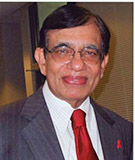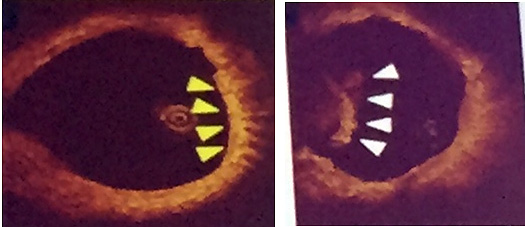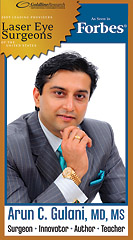
ACC 16: REPORTING FROM CHICAGO - PART IV
A few more important take home lessons

One common challenge that we face when dealing with established coronary heart disease is identification of vulnerable plaque on the wall of the coronary artery. A plaque is the hard waxy deposit on the inner lining of an artery (coronary, cerebral, peripheral, etc.) that contains cholesterol and calcium amidst other things. Rupture of these plaques is often the culprit for sudden cardiovascular events such as heart attack and stroke. If we can identify which one is likely to rupture ahead of time, then steps can be taken to stabilize the plaque and prevent these adverse events. A new technique called “optical coherence tomography” – noninvasive imaging using light waves to take cross sectional picture of the lumen and wall of the artery – seems to be quite promising and appears to be a better way to identify the cholesterol laden unstable vulnerable plaque than intravascular ultrasonography. Following are two photos showing the difference between a stable plaque vs. vulnerable plaque about to rupture.

Regular plaque vs. Vulnerable Plaque by Optical Resonance Tomography
During the Presidential address, Dr. Kim Williams reminded the audience that CV diseases (CVD) continue to reign as the leading cause of death around the world. In fact, mortality from CVD is projected to increase from 17.5 million in 2013 to 23.6 million in 2030 if we don’t take appropriate steps for prevention. Now, that’s a serious threat to our health. “The good news is that so many deaths from CVD are preventable but success lies in our ability to work together as a community.” In this regard, the American College of Cardiology (ACC) is building a team of nutritionists, scientists and clinicians dedicated to improve the lifestyle of every person through education and promoting science.
Indeed, one of the major highlights of the ACC 16 focused on lifestyle – diet, physical activity, avoiding tobacco use in any form, excessive alcohol usage and drug abuse. Maintaining normal weight and practicing mind control to reduce unnecessary stress are also important. As part of the strategic planning, the college is revamping its efforts to educate the public and recruiting all medical personnel and community leaders to popularize the healthy dietary guidelines. “A team-facilitated patient education is the best approach to improve the health of the general population,” said Williams. “Up until now, we have concentrated our efforts on treating symptomatic patients and secondary prevention. Now, it’s time to emphasize on primary prevention,” the President advised the cardiovascular community.
There is an emerging global health crisis of ‘Noncommunicable Diseases’ (NCDs) in low and middle income countries and this would include many parts of India as well — the four main types being CVD, cancer, chronic respiratory diseases and diabetes. In 2013 alone, NCDs killed eight million people before their 60th birthday in developing countries according to CFR (Council of Foreign Relations) task force. "More patients will get sick, suffer longer, require more medical care, and die young,” as per the task force. "Low-cost, prevention-based solutions exist for each challenge and the United States is in a position to help local governments implement them." What all these means to you is that unhealthy lifestyle is still the main risk factor responsible for NCDs and everybody should embrace healthy habits.
The news you have been waiting for is already here. Those patients on anticoagulant therapy with warfarin for atrial fibrillation to prevent strokes or any kind of venous thromboembolism (VTE) always lament the inconvenience of regular INR checks and dosage adjustments; additionally, warfarin can produce serious hemorrhage. The recent availability of novel oral anticoagulants (NOAR) like dabigatran, rivaroxaban, apixiban, etc., that can be administered in fixed doses, without the cumbersome laboratory monitoring and frequent dose adjustments, is a landmark change in the treatment of these diseases. Several recent large scale trials have shown these drugs to be therapeutically as effective as warfarin. Check with your doctor if this class of drugs is suitable if you are on warfarin therapy.
All in all, this year’s ACC convention also turned out to be a marvelous learning experience. From technological innovations to patient care, there was plenty to learn and with the rapid advances being made in the field, the future of cardiac patients has never been better.
This concludes this miniseries on ACC Convention 2016
M.P. Ravindra Nathan, M.D., is a cardiologist and Emeritus Editor of AAPI Journal. His book “Stories from My Heart” was recently released. (www.amazon.com or www.bn.com).
EYE CARE
Symphony for the Orchestration of VISION: Breakthrough for Cataract patients

U.S. FDA approves first “extended depth of vision” lens implant that provides cataract patients with an extended depth-of-focus, which helps improve their sharpness of vision (visual acuity) at near, intermediate and far distances. This lens implant is called “Symfony.”
In my continued quest for technology that can predictably and accurately become part of all optical elements of the eye thus leading each patient’s brain to see the best they potentially can, I was privileged to use this futuristic technology abroad before FDA approval and saw its potential in playing a pivotal role in the orchestration of vision.
Cataracts (as mentioned in my previous columns in KhaasBaat) are a common eye condition where the natural crystalline lens in our eyes becomes clouded with age, impairing vision. According to the National Eye Institute, more than 20 percent of Americans will have cataracts by the age of 65, and the prevalence increases with age. In cataract surgery, the clouded natural lens is removed and replaced with an IOL (artificial Lens Implant).
Traditional monofocal IOLs have been limited to improving distance vision. The Symfony IOL improves visual acuity at close, intermediate and far ranges and, therefore, may reduce the need for patients to wear contact lenses or glasses after cataract surgery.
Though the Symfony lens implant is not a multifocal lens implant like the ReStor, Tecnis or even accommodative Crystalens we have previously discussed, this lens implant builds on our natural accommodative effect and uses diffractive optics to both improve the quality of vision from the lens and expand the range of distances the lens at which the lens can adequately focus.
Let’s first understand the idea behind chromatic aberration correction, which is simply to get the colors of the spectrum focused at the same point. As we all know, different materials have different dispersive properties with light; some focus colors closely together and some spread them out. The idea is that if you focus all of the colors together, you can have a higher quality of vision. This could effectively allow the Symfony by focusing colors well with a low dispersion and actually improving on it without using diffractive optics (like ReStor lens implant) to expand the visual range to possibly sharp distance vision even to the effect of beyond 20/20. Which means a patient with this lens implant with a healthy eye could potentially achieve vision of 20/12 or even 20/10 (SuperVision).
Additionally, it can also expand the range of vision. Expanding the depth of focus (range of vision) does compromise and sacrifice the best vision potential but given that the vision potential actually was better than 20/20, these patients can still see crisp distance of 20/20 and yet enjoy reading vision without glasses.
With the above possibility, this new lens implant could possibly override the most common cause of dissatisfaction of patients with available multifocal lens implants, i.e., decreased contrast sensitivity and quality of day and night vision. Also, this new lens implant does have a toric version that could simultaneously correct a patient’s associated astigmatism during cataract surgery.
FDA approval was based on a randomized clinical trial comparing quality of vision outcome with a monofocal IOL. The study evaluated visual acuity at near, intermediate and far ranges; contrast sensitivity (the ability to distinguish small differences between light and dark) including adverse after implantation.
As I have always reiterated in my previous columns, technology alone cannot lead you to “magical vision;” do discuss with your eye surgeon if you are a good candidate and let your surgeon customize a plan for this new breakthrough lens implant using robotic lasers, intra-operative, real-time diagnostics and even combination Lasik if needed.
This is truly exciting times for patients to seek a custom-designed surgical plan and vision outcome for one of the most common conditions in medicine itself, cataracts!
So, go ahead and take advantage of the times we are living in and enjoy the “Symfony” of your own “Vision Orchestra.”
Arun C. Gulani, M.D., M.S., is director and chief surgeon of Gulani Vision Institute in Jacksonville. He can be reached at [email protected] or visit www.gulanivision.com